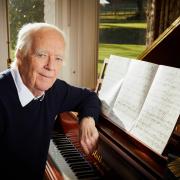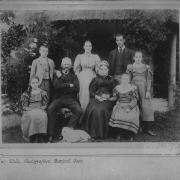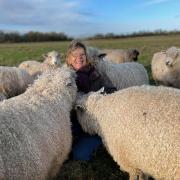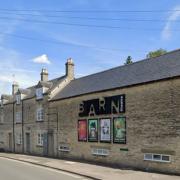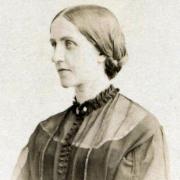Stephen Roberts is back with a new batch of ‘Cotswold Greats’ for 2023; kicking off this month with the heroic Edward Jenner
Edward Jenner (1749-1823)
My loyal following might remember the series of 12 Cotswold ‘Greats’ that I wrote for you back in 2021. There were some crackers. We took a year’s sabbatical last year, but now we are back with a second series of local luminaries. There was, on many levels, just one person I could resume with.
I’ve written about Edward Jenner (1749-1823) once before (May 2016 issue) and introduced him by recalling ‘the crowning moment in physician Edward Jenner’s career – the first to successfully vaccinate against smallpox’. I concluded by declaring that the task commenced in Gloucestershire by this remarkable chap, the father of vaccination, ‘led to the saving of more lives than the work of any other person’. And there’s more, far more, because January 2023 also happens to be the 200th anniversary of the death of this Heaven-sent angel of mercy. Of course, back in the spring of 2016, none of us knew what lay in store for us just four years in the future.

Jenner was born at Berkeley vicarage, Gloucestershire, in May 1749 – the eighth of nine of the local vicar – but was orphaned aged five. It’s nice that Berkeley spawned such a force for good; its other claim to fame having been the foul murder of Edward II in its castle. Jenner attended local schools in Wotton-under-Edge and Cirencester, then, aged 14, was apprenticed to local surgeon, Daniel Ludlow, in Chipping Sodbury.
In 1770, Jenner headed for London to train under eminent surgeon John Hunter, who gifted him a precious thermometer. Come 1772, and by now aged 23, Jenner returned to Berkeley, acquiring a practice and setting up as a doctor in his home town. Jenner trotted off on home visits over a 400-square-mile area, once almost expiring due to his fervent dedication, braving a blizzard to try and visit a patient ten miles away in Kingscote. He declined to abandon those too poor to pay for treatment, and when he discovered his vaccine, refused to patent it, fearing this would make it unaffordable to most (which would rather defeat the object of it).

While Jenner cuts his teeth in the medical profession, we can fast forward 250 years to 2020 and a rude awakening for a time of smug complacency. Just when we had casually assumed we had everything tamed, along came a virus we had no answer to, at the time it first arose at any rate. The first worldwide human cases had been identified in December 2019 – hence ‘COVID-19’ – with the first two confirmed cases in the UK following just a month later, on January 30, 2020.
By 1775 Jenner was examining traditions regarding cowpox. He became convinced a dose of it was effective against the far deadlier smallpox and began testing his theory, drawn from countryside folklore, that milkmaids – who suffered mild cowpox – never contracted smallpox, something he was to observe locally. Smallpox was one of the greatest killers of the time – the Georgian cancer or heart disease – killing 10% of the population, rising to 20% in towns and cities, where infection spread more easily. Among children, it accounted for one in every three deaths. Jenner dubbed it the ‘speckled monster’. The virus accesses the body via the lungs, is carried in the blood to other internal organs, then manifests itself on the skin. One attempt to protect against the disease from the early 18th century involved ‘variolation’, namely scratching into the skin some scab material from a mild smallpox, but this was risky and many died. Jenner himself was treated in this way whilst at school. He suffered badly, but never relaxed on its potential significance.


Back in the early-21st century, and residents of the UK were waking up to the fact that this was no longer a problem in some far-off country. On March 5, 2020 the first death in the UK had been confirmed and from there events accelerated scarily, leading to the first UK lockdown being imposed from March 23. At the time, it seemed not a moment too soon; the following day a further 87 deaths would be announced – our blackest day in the pandemic thus far – taking the total of UK COVID-19 deaths to 422. We would see the best and worst of people during the pandemic, and March saw appeals by government ministers for people to desist from panic-buying, as ‘bog-roll bandits’ became a new phrase to enter general parlance.
Jenner owned The Chantry in Berkeley, just a stone’s-throw from that ominous castle. That was from 1785 until his death. He was also made a Fellow of the Royal Society (FRS) in 1789, the year of the French Revolution, but bizarrely for his studies into the cuckoo’s nesting habits. Jenner’s Eureka moment, however, came on May 14, 1796. What I wrote over six years ago now was: ‘As the eight-year-old boy grimaced, the middle-aged man inserted pus taken from a cowpox pustule, into an incision in the innocent’s arm. It sounds like a horror story, but was actually the crowning moment in physician Edward Jenner’s career, the first to successfully vaccinate against smallpox. The youngster was James Phipps; considerably less is known about him’.

When Jenner experimented on Phipps, he firstly passed cowpox to him from a local dairymaid by rubbing material from the girl’s pocks into scratches on his arm. He was mildly ill, but recovered within a week. The next step (far deadlier, potentially) was to ‘variolate’ him. To Jenner’s relief, the earlier infection with cowpox protected against smallpox. Sometimes the consequences of being wrong are frightening to consider. Jenner experimented on several other children, including his eleven-month-old son.

The modern inheritors of Jenner’s mantle would soon be at work, trying to develop a vaccine that might offer protection against COVID-19. The first person was vaccinated on December 8, 2020, nine months after the UK’s pandemic had claimed its first victim. That dose of Pfizer was the first of millions; jabs that eventually helped to turn the tide as Jenner would have predicted. The need for vaccines, 250-odd years after Jenner proved his theory, had been proven again. Earlier in the month, the number of deaths attributed to COVID had passed 60,000. The scientists who developed the vaccines would become a new type of hero, as would the vaccinators and volunteers who ensured the doses ended up in millions of ready arms.
In 1797, Jenner submitted a paper to the Royal Society describing his experiment, but was told his ideas were too revolutionary and that he needed more proof. Jenner was ridiculed. Critics claimed it was ‘ungodly’ and abhorrent to inoculate from a diseased animal. The practice met with violent opposition for a year, possibly because of vested interests not welcoming Jenner’s innovation. Anti-vaxxers are nothing new, it seems. Jenner won them round with over 70 principal physicians eventually signing a declaration of confidence. Jenner became the father of immunology, publishing case studies to ensure the world was enlightened. He was one of the first to appreciate that research only counted if widely publicised.


In 1798, Jenner’s results were published and he coined the word ‘vaccine’ from the Latin ‘vacca’ (cow). Honours were conferred as Jenner spent most of his time researching and advising on his vaccine’s development. He dubbed himself ‘Vaccine Clerk to the World’ which sounds tongue-in-cheek, but maybe wasn’t. His biggest fan apparently was Napoleon, who insisted the French army be vaccinated in 1805. Jenner may have saved innumerable lives but his own life was beset by tragedy, with both his wife and a son dying of TB. Jenner suffered a stroke and died in January 1823, aged 73, and was buried in the family vault in St Mary’s, Berkeley. The word ‘hero’ is overused nowadays, but Jenner was a hero; someone whose life’s work saved people in droves. Vaccination with cowpox had become compulsory by 1853.

The Chantry, meanwhile, became the new vicarage, replacing the one where Jenner was born, remaining the vicarage until the early-1980s when it was acquired to house a museum in Jenner’s honour, which opened in 1985. This is a place worth visiting, for it was here history was made and humanity saved, and ultimately saved again. And James Phipps? I don’t know whether he really understood what he was involved in, or the potential dangers, but he honoured Jenner by being a pall bearer at his funeral.
On October 3, 2022 I received my fourth dose of a COVID vaccine; ‘Mrs Steve’ – a tad more senior and vulnerable – her fifth. Thank you, Edward Jenner. Thank you also his 21st-century equivalents and all those others who quietly went about their business to make the vaccination programme a success.

CHRONOLOGY
- 1749 – Birth of Edward Jenner in Berkeley, Gloucestershire (May 17).
- 1772 – Jenner sets himself up in practice in Berkeley having trained in London.
- 1775 – Jenner has begun investigating traditions surrounding cowpox.
- 1785 – The Chantry becomes Jenner’s home until his death.
- 1796 – Jenner’s crowning glory as he proves that cowpox will protect against smallpox.
- 1797 – Jenner’s paper to the Royal Society is met with much opposition.
- 1798 – The word ‘vaccine’ is coined by Edward Jenner from the Latin ‘vacca’.
- 1823 – Death of Edward Jenner in Berkeley (January 26).
- 1853 – Vaccination against smallpox using cowpox is made compulsory.
- 1985 – Opening of a museum devoted to Jenner in his former home.
- 2020 – The first vaccination against COVID-19 is administered in the UK (December 8).
References
- On This Day – the history of the world in 366 days (1992)
- Chambers Biographical Dictionary (1974)
- BBC website (bbc.co.uk)
- Jenner Museum (jennermuseum.com)
- Science Museum (sciencemuseum.org.uk)
- History Learning Site (historylearningsite.co.uk)
- Jenner Institute (www.jenner.ac.uk)
- NHS England (england.nhs.uk)
THE 2021 COTSWOLD GREATS
- January – Edward the Confessor
- February – Algernon Freeman-Mitford
- March – William Morris
- April – Arthur ‘Bomber’ Harris
- May – Marie Corelli
- June – Sarah Churchill
- July – W.G. Grace
- August – Stanley Baldwin
- September – J.B. Priestley
- October – Alfred the Great
- November – C.S. Lewis
- December – Flora Thompson






